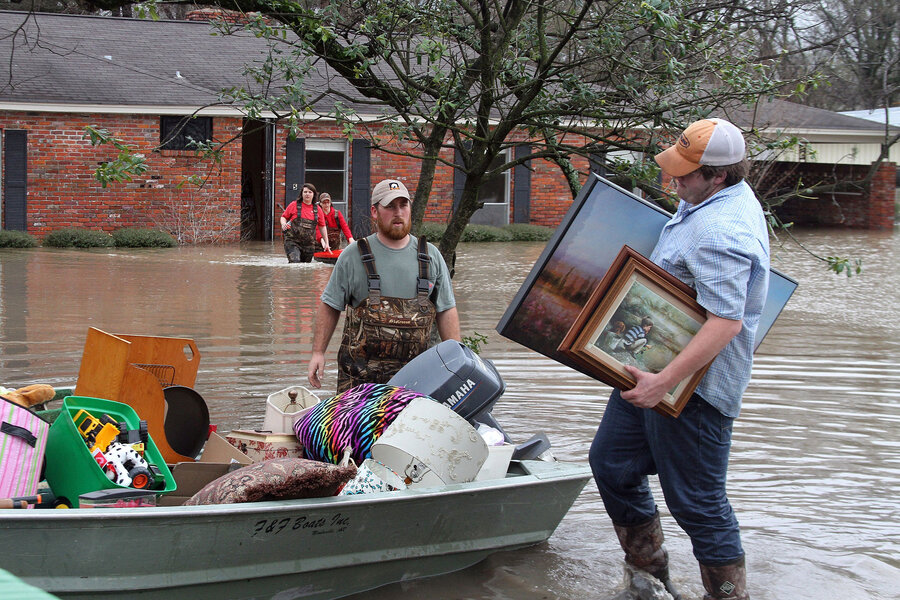Torrential rains in California, Louisiana, and Mississippi: What's going on?
Loading...
Dramatic rainstorms that flooded California, Mississippi, and Louisiana signal an erratic El Niño that continues to rain on both the West and the South.
The Friday storm closed schools in northern California and the airport in Fresno, and mudslides shut down roads throughout the state. In the northern California mountains, snow was forecast through the weekend. In Southern California, first responders near Los Angeles worked to get the electricity back on, the Associated Press reported.
Most Californians embraced the storm as a welcome change from heavy drought, however.
"I love the smell, the fresh clean air because it takes the dirt out of the air. I like seeing it," Peer Swan, a board member of the Irvine Ranch Water District, told KABC-TV. "It's been awhile."
A high pressure system had been keeping Pacific storms out of California until this week, when a shifting air ridge permitted the storms that brought rain to the northern regions to move into California, according to a report from the University of Nebraska-Lincoln-based US Drought Monitor.
"This brought the state some badly-needed precipitation after rather dry and mild conditions the past 3 weeks caused a sharp decline in the Water Year-To-Date precipitation and snow pack that were both above-normal in early February," wrote David Miskus in the US Drought Monitor Report.
Some expected El Niño-driven weather to hit the state with rain long before now, but March is still within the weather pattern's winter deadline. Jan Null, founder of Golden Gate Weather Services and a top tracker of this El Niño since mid-2015, has called this year a "poster child" for his mantra, "All El Niños are not the same!"
The National Weather Service forecasted up to 14 inches of rain throughout California and and much as three feet of snow in the Sierra Nevadas, which typically hold 30 percent of the state's water supply.
California's heavy rain has its downside – the rain-soaked ground caused a commuter train to derail on Monday – but most drought-weary Californians are relieved by the moisture.
"Lots of people are buying tarps and roof patch and heat guns to dry stuff up, anything for getting water off the ground, and sandbags are flying out of here," Bobby Rehfeldt of Goodman Building Supply in California told the AP. "It's just rain, and we need it."
The El Niño's effects are more dramatic in Mississippi and Louisiana, where record flooding has persuaded many to gather their personal belongings and flee, as an estimated 1,000 people have abandoned their homes to flood in Mississippi, and three have died in Louisiana, the Associated Press reported.
El Niño patterns typically hit the Deep South with cool, wetter-than-average weather during the late winter and spring months when the jet stream shifts, leaving an unusually deep trough of air pressure to transport storms from the Gulf of Mexico. The likelihood of extreme, wet weather between January and March increases by twofold during an El Niño year, according to the National Weather Service's Jackson, Miss., office.
Although locals were expecting some rain, many hurried back to flooding homes to collect belongings because the severity caught them by surprise.
"We'd heard we'd get a lot of rain, but it all came so sudden," Brenda Maddox, who left her Louisiana home of 25 years with her husband when flooding began, told the AP. "We hate to leave, but we thought we'd get out while we can."
Although locals probably would not have asked for it in such large amounts, the precipitation is helpful in this part of the country as well, because several dry months had produced short-term deficits, Mr. Miskus wrote in the US Drought Monitor report. Little precipitation is expected for these areas next week.








